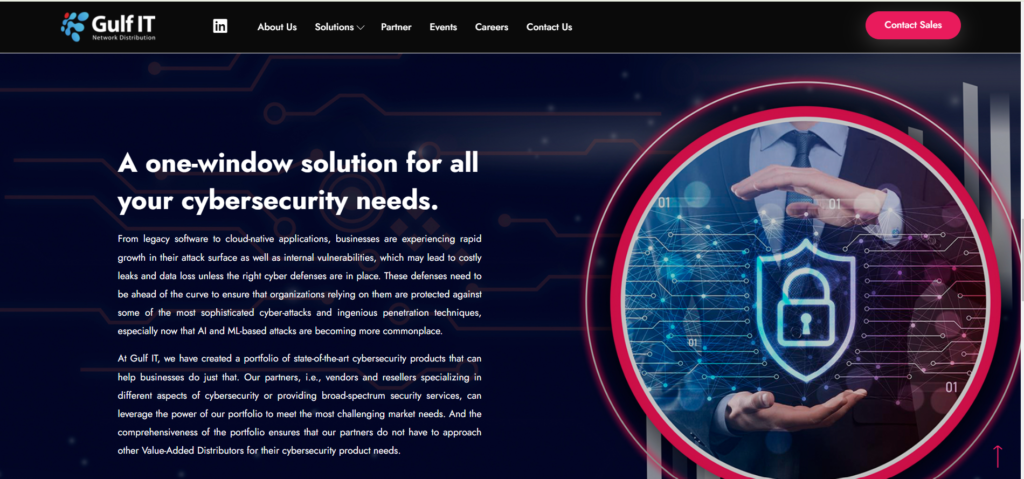1. Find out which of the essential services your business offers. Common services include risk assessments and threat management. Incident response and vulnerability assessment and penetration testing, security audits, and incident response are also common. Understanding their core competencies helps determine whether they meet your specific needs.
2. Review the managed security services
Take note of whether the business offers managed security services (MSS). MSS providers offer ongoing monitoring and administration of security systems, which can be crucial for organizations with no internal expertise. Their ability to provide continuous services can be assessed by evaluating their capabilities.
3. Assess Compliance and Regulatory Services
Check that the cybersecurity company you choose offers services that help with compliance to international and local regulations. You may need help with local data protection legislation, PCI DSS or GDPR. For businesses operating in highly controlled sectors, a focus on compliance is vital.
Review Capabilities for Incidents
Examine how your company responds to an incident. A well-constructed incident response strategy should include detection, control, elimination as well as recovery procedures and lessons learned. Understanding their response to incidents can provide an insight into how well prepared they are to deal with cyber-attacks.
5. Specialized Services
Find out if the company provides customized services specifically tailored to certain industries or needs. They could be cloud-based or IoT security or other protections tailored to sectors such as finance or healthcare. Specific services showcase the company's ability to address unique challenges.
6. Take a look at the Training and Awareness Programmes
Check if the company offers awareness and training programs for your employees. Training your employees is crucial in reducing the chance of human error. Human error is among of the main causes for security violations. Companies that offer comprehensive training can enhance the security posture of your organization.
7. Check for Threat Intelligence Services
Find out if a company offers threat intelligence. These services enable organizations to be aware of any new security threats and weaknesses. This lets them take preventive steps to protect themselves. A threat intelligence system that is well-established can help improve your security plan.
8. Evaluate Technology Partnerships
Learn more about the company's partnerships with technology. Collaborations with the top cybersecurity technology providers will enhance the range of services and enable you to access the latest tools and solutions. A broad technology ecosystem can help to provide stronger security measures.
9. Customization and Flexibility
If you are looking for a service provider that can customize their services for your business, look at the ability of the firm to accomplish this. In cybersecurity, a one-size fits all approach may not suffice. Knowing the flexibility of a company in adjusting their services is crucial for addressing unique security risks.
Review Service Level Agreements
SLAs or Service Level Agreements, are agreements that describe the level of service that is provided. SLAs must clearly define the scope of services as well as the response time and performance indicators. Knowing about SLAs can help establish expectations for service delivery. View the most popular Cyber security services for site recommendations including information security logo, cyber security consulting, network security and cyber security, manage security services, cybersecurity consulting services, cybersecurity for iot, security solution, cyber security company, cyber security tech, cyber security services company and more.

Top 10 Ways To Evaluate The Capabilities Of Incident Response At A Cybersecurity Services Firm
1. Understanding the Incident Response FrameworkBegin your research by examining the framework for incident response that the company employs. If the framework is clearly defined, as in the NIST Cybersecurity Framework, or SANS Incident Response Process for instance, it means that the company follows industry best practices to manage incidents effectively. Assure that the company is able to follow a well-defined approach to handling incidents.
2. Evaluate Incident Response Team Expertise
Check out the credentials and experience of the staff members. Find certifications like Certified Incident Handler(GCIH), or copyright Security Professional(copyright). Team members with a solid understanding in the area of incident management and mitigation will be able to effectively manage and reduce the risk of incidents.
3. Review of Incident Responses to Past Incidents Case Studies
Ask for examples or case studies of incidents that have been handled by the company. Studying the way they handle real-life situations can give you insight into their efficiency as well as their speed and general approach to handling incidents. You can learn the methods they used to contain and resolve incidents by reviewing their thorough reports.
4. Find out if Incident Response is available 24/7. Availability
Ask the firm if they offer 24 hour emergency assistance for incidents. Cyber-attacks can strike at any time. The presence of a personnel on call 24 hours a day will ensure that any threats are handled immediately and minimize time to repair and damage.
5. Contact Us for Information on Incident Detection Systems
Review the tools and techniques that the company employs to monitor and detect incidents. A reliable detection tool, such as one like a Security Information and Event Management system (SIEM), and an intrusion detection (IDS), is essential in identifying security threats as swiftly and efficiently as possible.
6. Examine Communication Protocols
Examine any communication protocols the business uses in an incident. It is crucial to have clear and effective communication to coordinate response as well as inform the stakeholders and ensure that everyone knows their roles. How can they keep their clients updated throughout the response?
7. Review Review Processes for Post-Incident Review
Inquire about the company's post-incident review processes. The depth of the review process after an incident helps identify what lessons were gained and what improvements could be made. To improve future response efforts Look for companies that have implemented changes based upon these reviews.
8. Evaluation of Recovery and Remediation strategies
It is important to understand the methods employed by the organization for recovering and remediation following an incident. Recovery plans should include steps required to recover data and systems as well as ensuring that weaknesses are taken care of in order for any future issues to be prevented. Find out what approach they use in rebuilding and hardening their systems after an incident.
9. Review compliance with regulatory requirements
Ensure that the company's incident response capabilities are in line with regulations. There could be specific industry requirements for reporting and responding to incidents. An organization that is familiar with the regulations can help to ensure compliance.
10. Ask for references and testimonials
Finally, gather references from clients who have utilized the company's services for incident response. Testimonials from clients can give valuable insight into the effectiveness, reliability and satisfaction of the company's response to incidents. View the best application penetration testing dubai for blog advice including cyber security website, network security management, cyber security solution, network security and cyber security, ai in cybersecurity, cyber security what, cyber security job, network and systems security, computer security company, managed it services security and more.

Top 10 Ways To Determine The Security Knowledge Of A Cyber-Related Company
1. Evaluation of Training Content Start your evaluation by reviewing all the information in the programs for security awareness. Be sure the content covers the most important topics such as phishing and social engineering. Also, make sure that compliance and protection of data are covered. To ensure that employees are capable of recognizing and responding to potential threats, a comprehensive training program is necessary.
2. Check for Customization Option
Find out if the training will fit into your company's culture and the needs of your employees. Through tailoring training for specific situations and challenges faced by employees they face, you can boost the effectiveness and efficiency of training and increase retention.
3. Examine the methods used to deliver training
Examine the various ways of the delivery of training. You can choose from webinars, interactive simulations, in-person training, online courses or workshops. Utilizing different formats can increase the efficiency and meet the needs of different learning preferences.
4. Find Interactive Elements
Check if your training has interactive elements such as quizzes, scenarios, and simulations. Interactive training increases retention and participation, making it easier for personnel to use the knowledge they've acquired in real situations.
5. Review the frequency and frequency of updates.
Ask about the frequency and updates of the training materials. Since cybersecurity threats are always changing, regular training sessions as well as timely updates to curriculum is vital for employees to stay informed of the latest risks and methods.
6. Measurement of effectiveness
Look for metrics such as pre- and post-training assessments as well as feedback from participants, and trends in incident reporting. Look for metrics such as the post-training and pre-training evaluations as well as feedback from participants, as well as incidents reporting trends. The results of the training can be used to evaluate its value and pinpoint areas to improve.
7. Check Certification and Conformity
Check if the training program includes certification upon successful completion. The certifications can boost the credibility of employees and prove that they have acquired the knowledge they need. Be sure to ensure that the training you provide is compliant with any legal requirements your business may have.
8. Search for testimonials and references.
Find feedback from businesses that have used training services previously. Testimonials can provide an information about the effectiveness of the training and the way it was received by the employees. Positive feedback is a sign of trustworthiness when it comes to delivering awareness training that is effective and has impact.
9. Assess Post-Training Support
Discuss the assistance that will be provided once the training is completed. Continued resources such as refresher classes, newsletters, or access to knowledge databases can enhance the training.
10. Evaluation of Engagement and Culture Building
Then, consider whether the program of training helps in the development of a culture which promotes security in your organization. Consider initiatives that promote ongoing awareness, for example security newsletters, seminars, or competitions. Solid security culture encourages employees to be responsible for protecting their organization. Have a look at the top iconnect for site recommendations including security it company, secure the data, information security logo, cyber security tech, it security description, it security usa, network security technologies, cyber security projects, managed security services provider, cyber security information and more.
